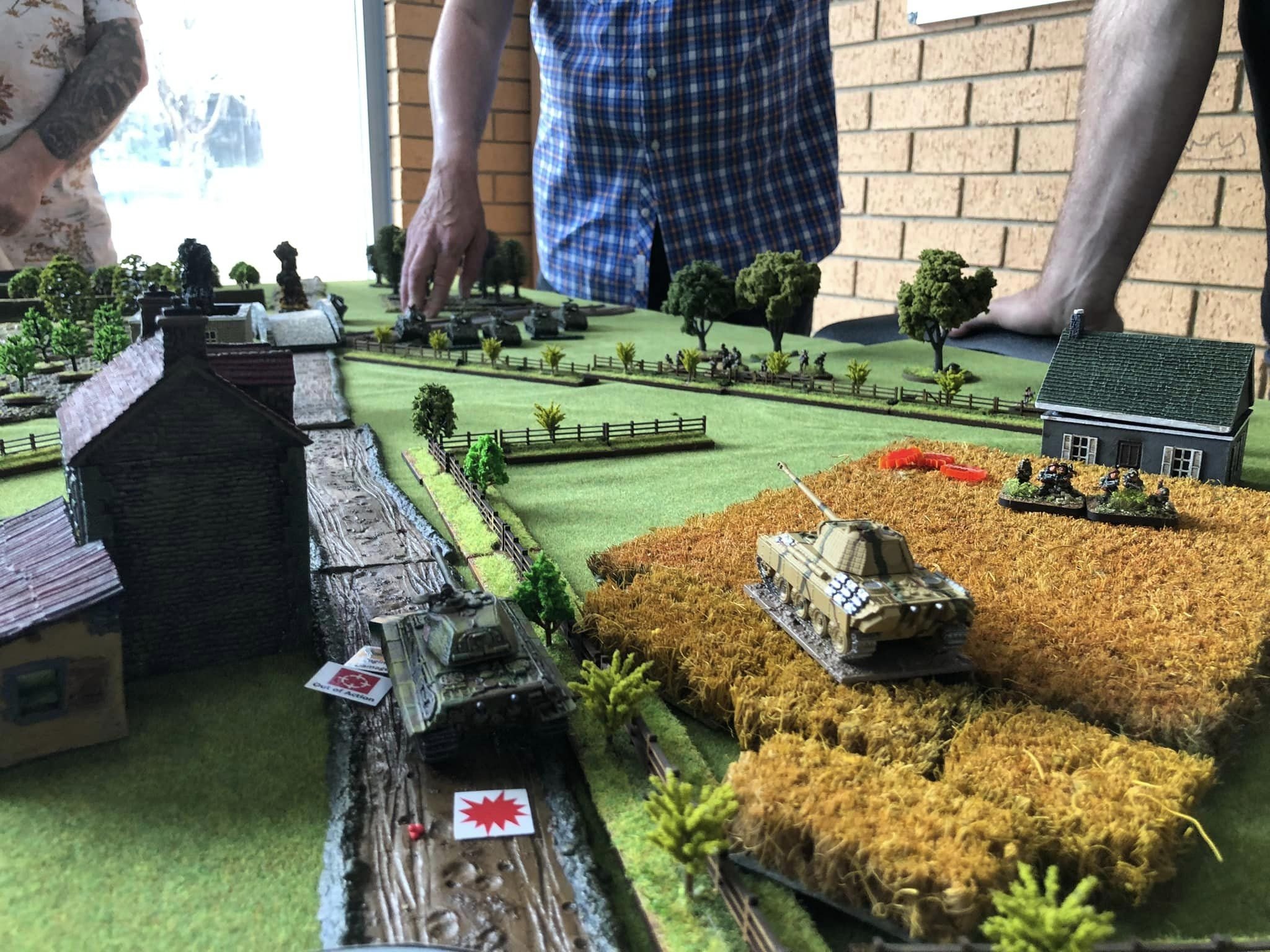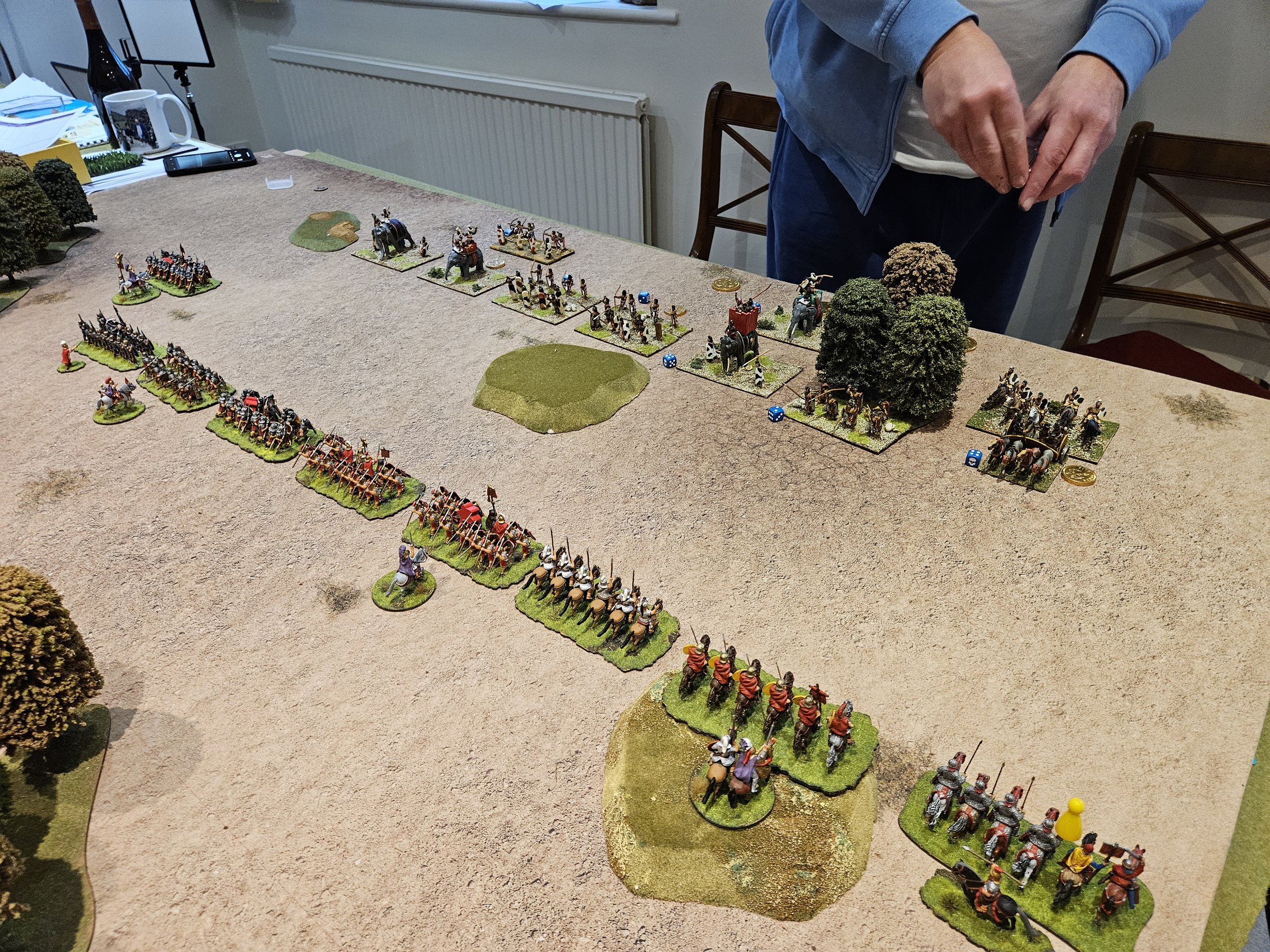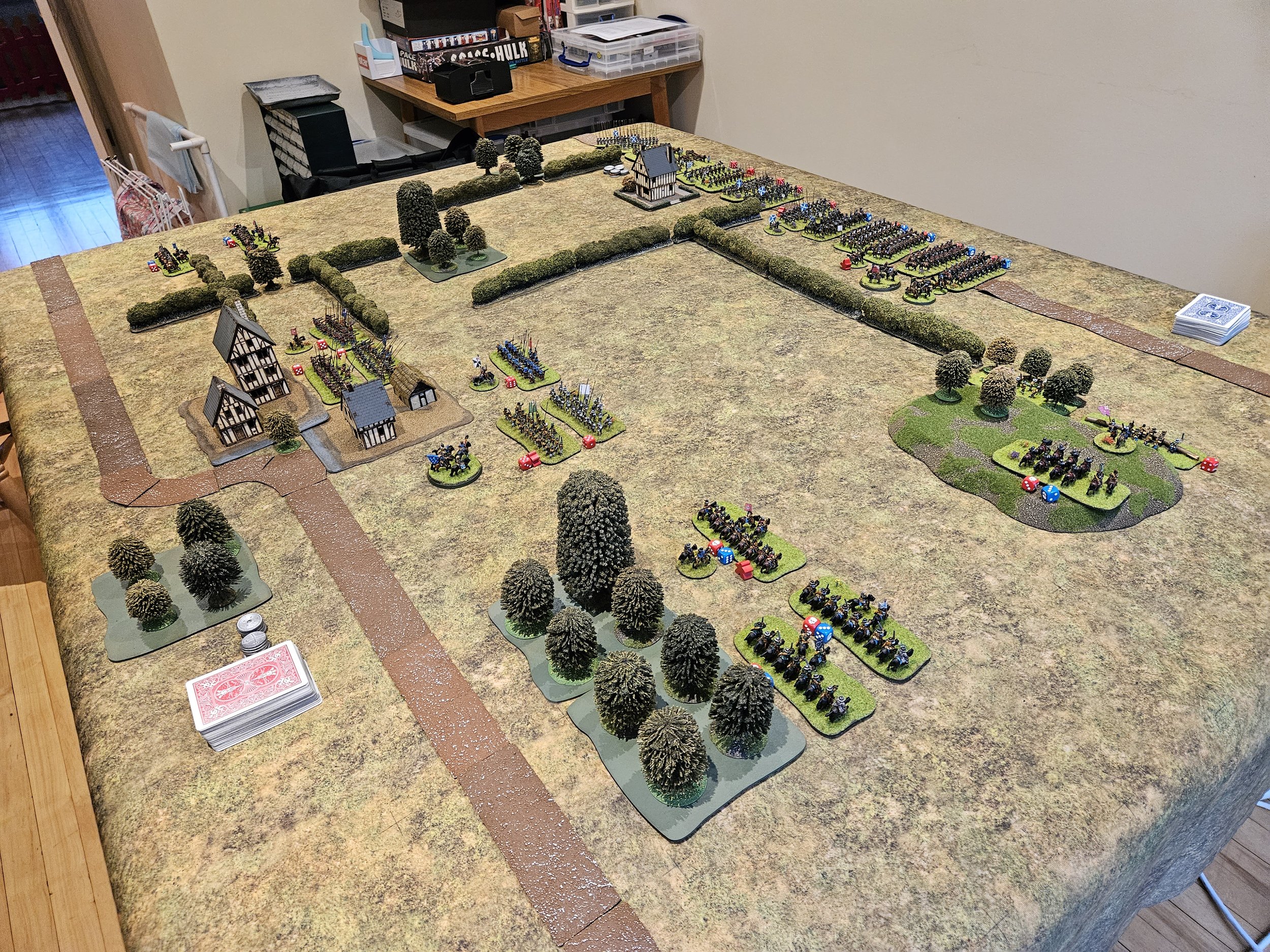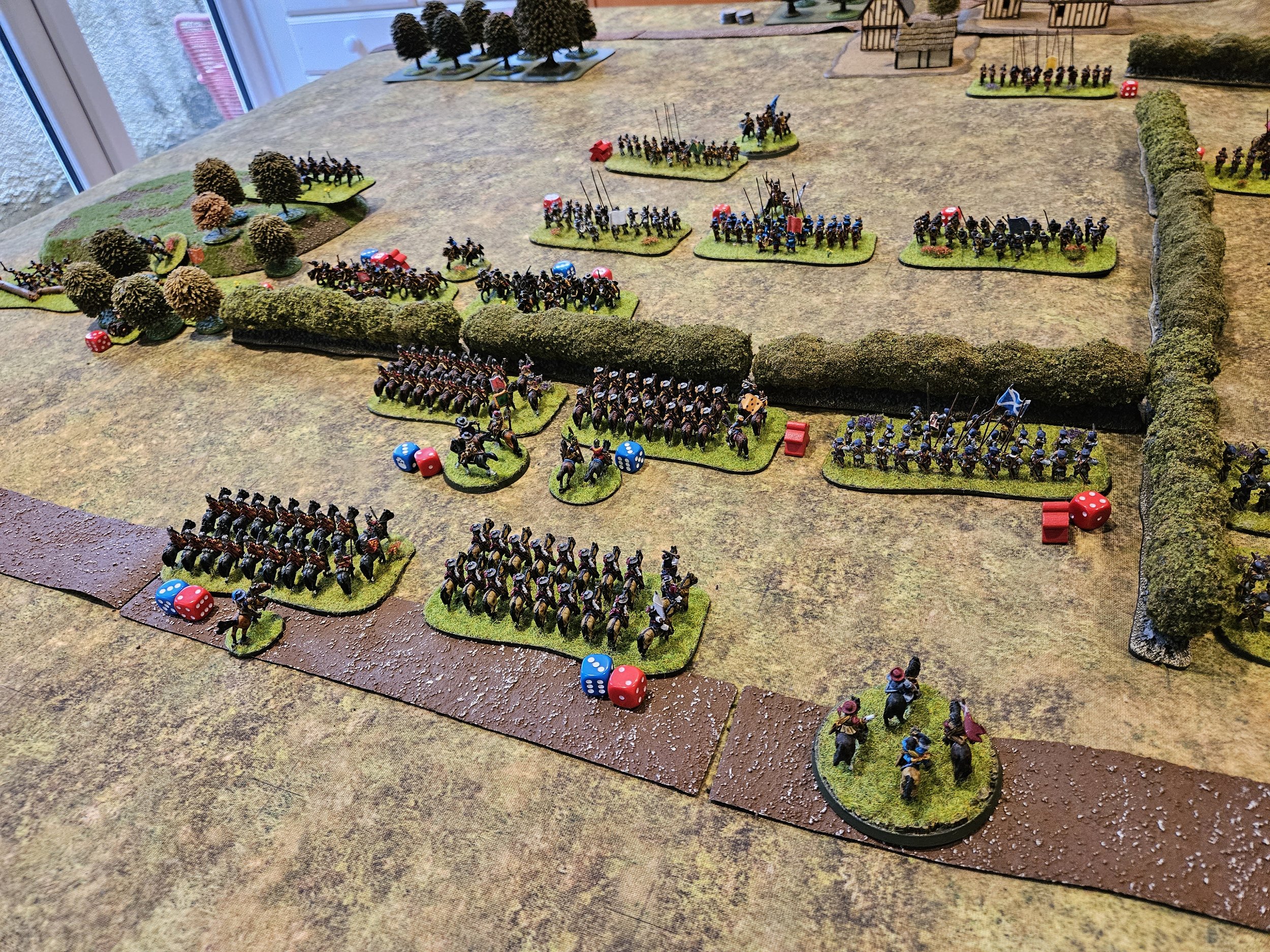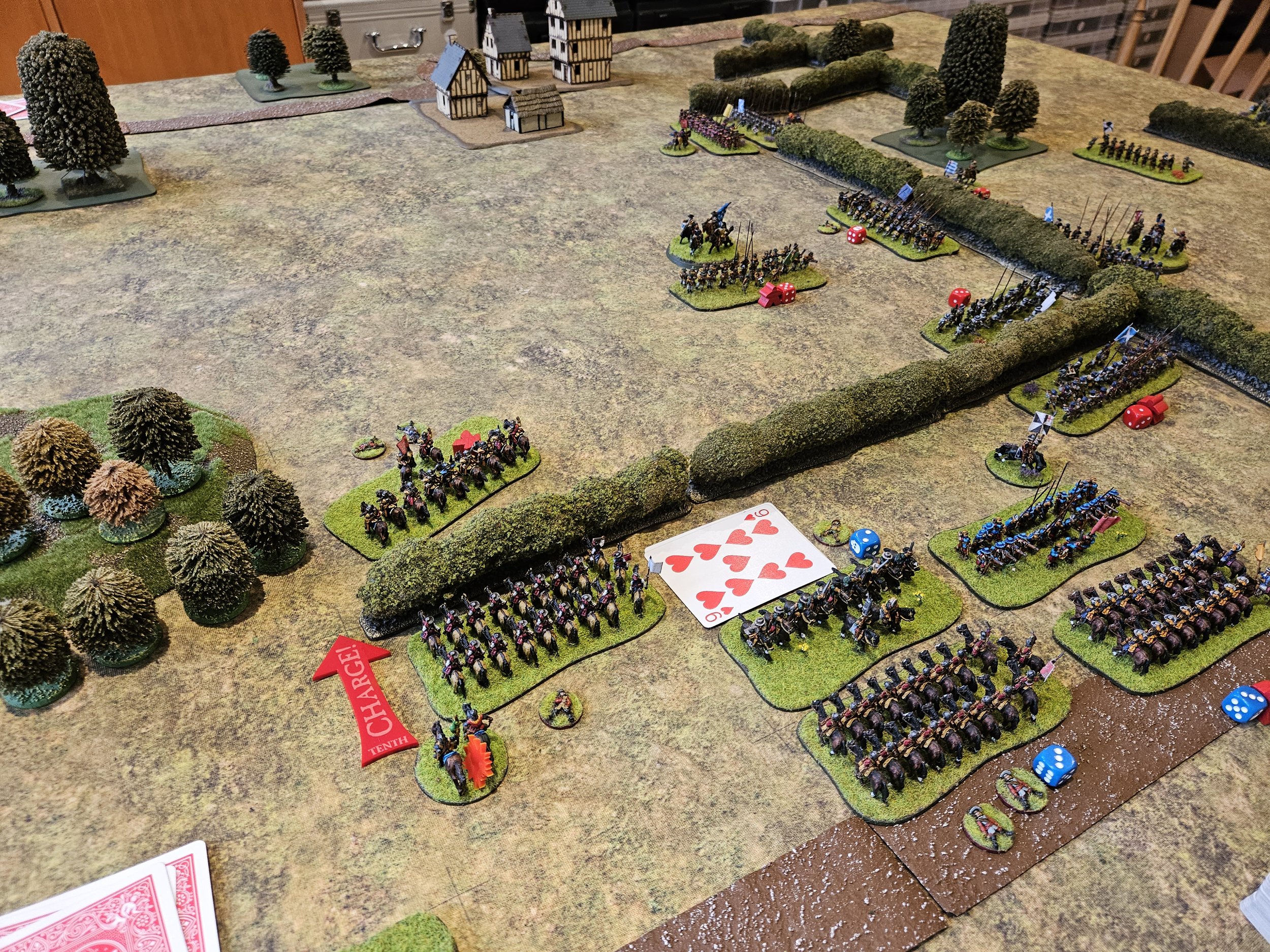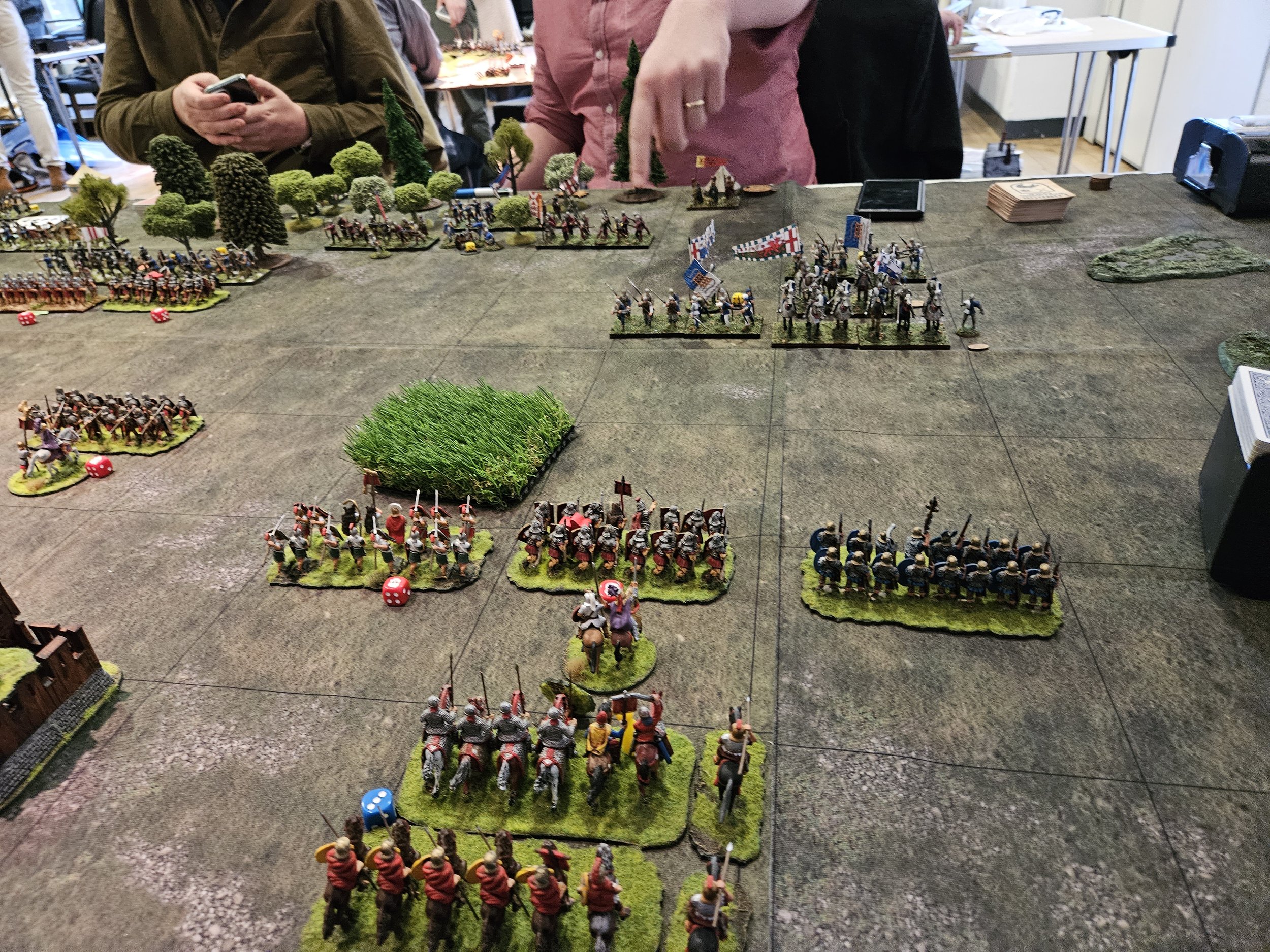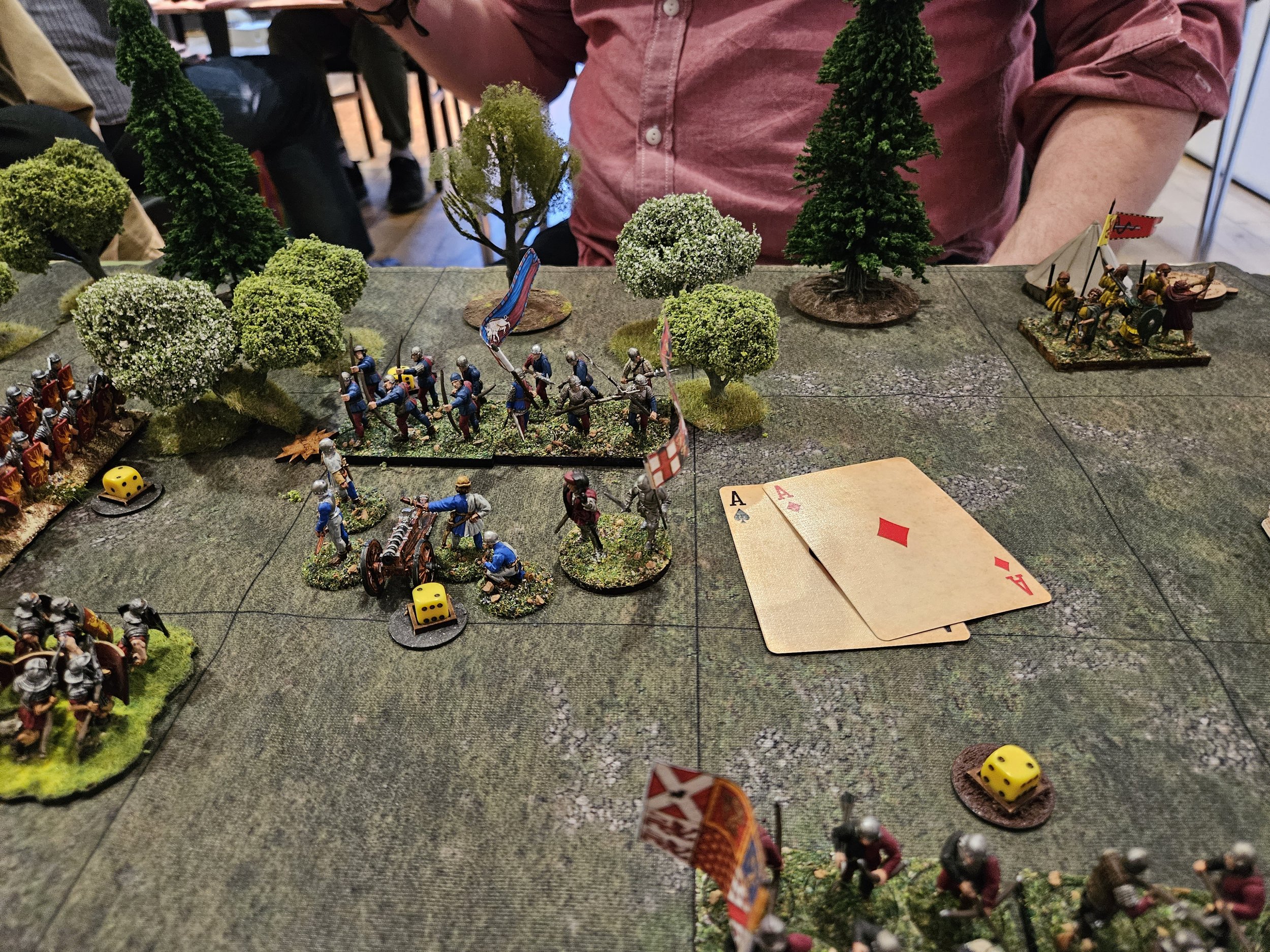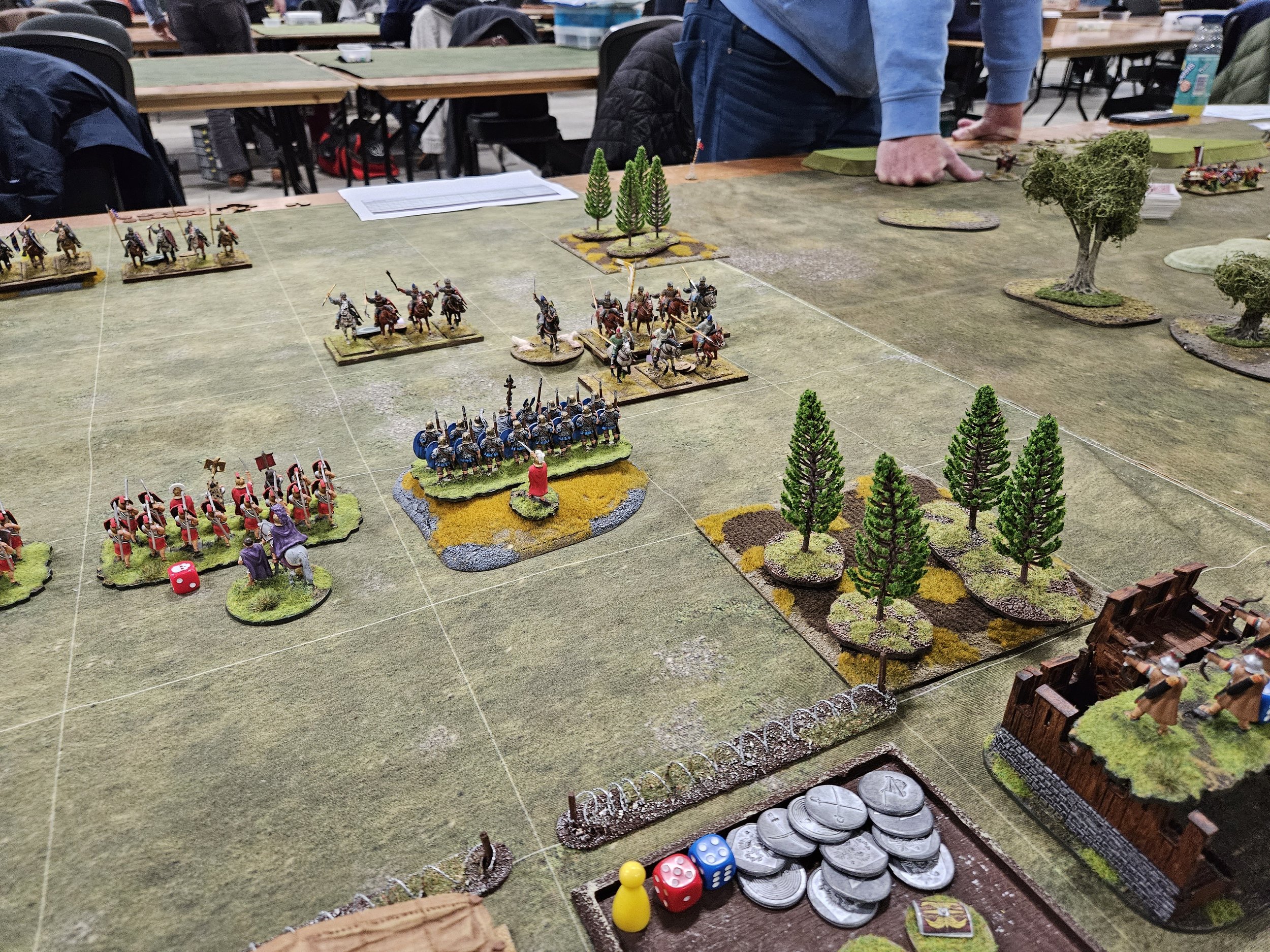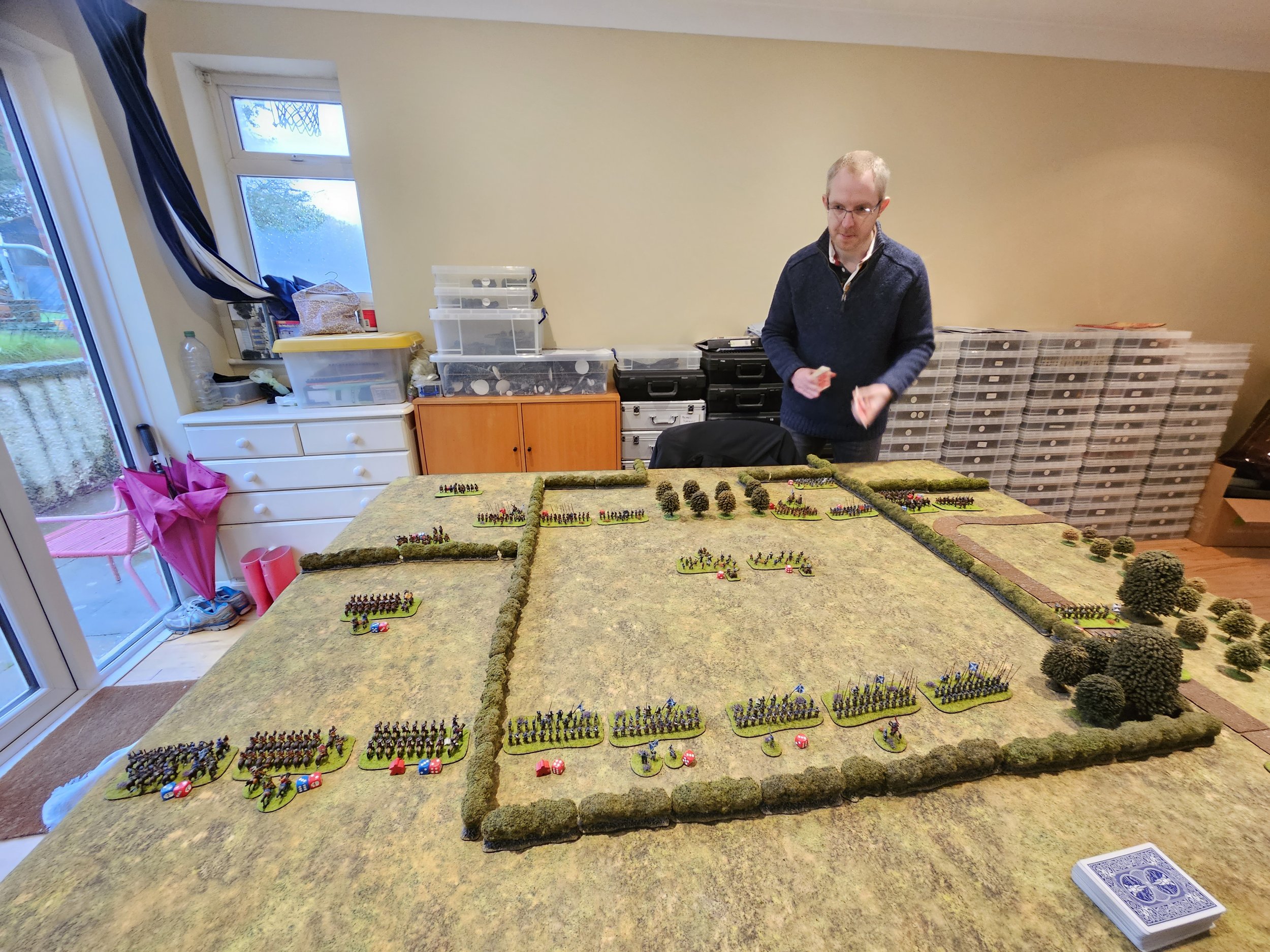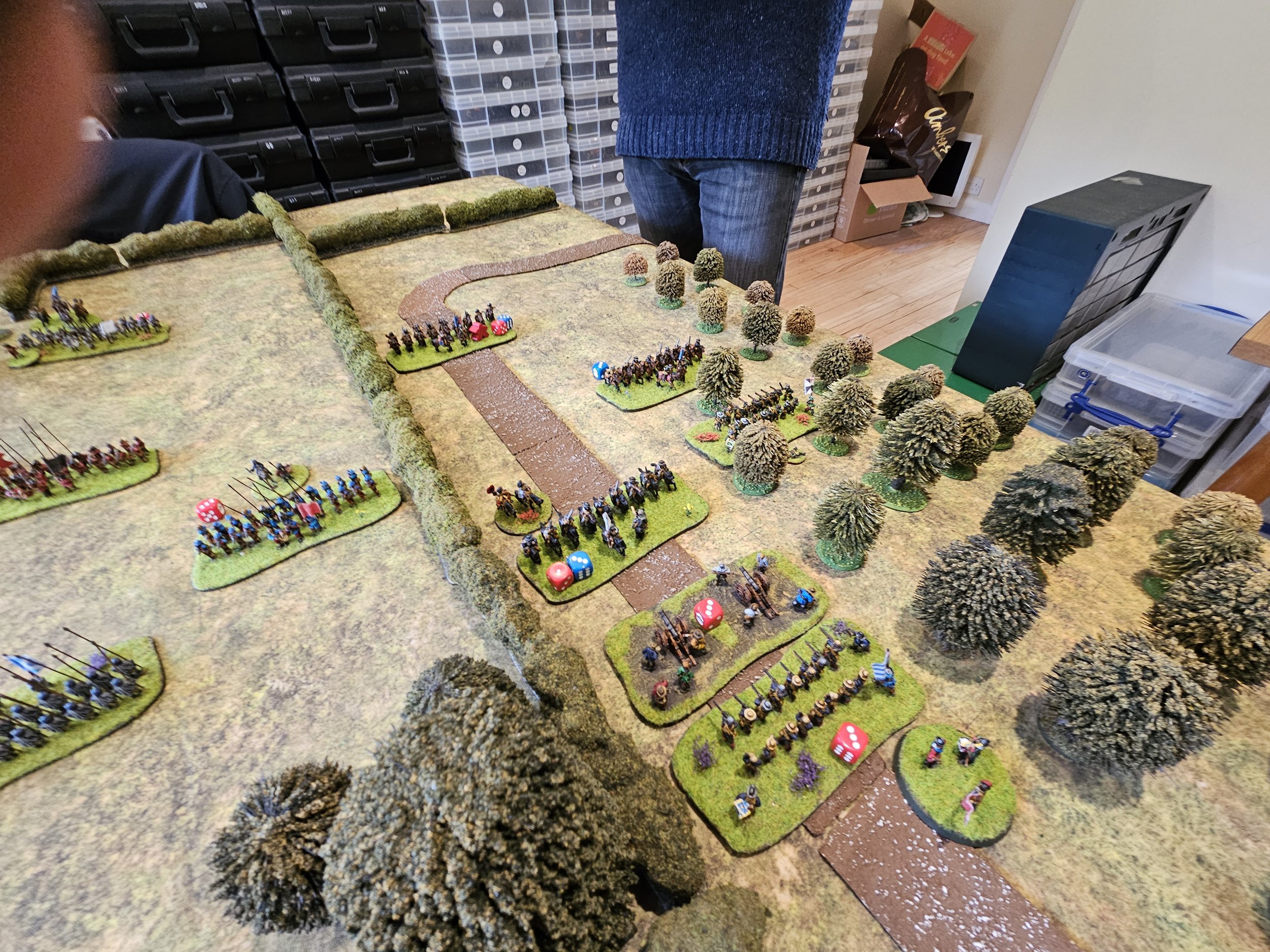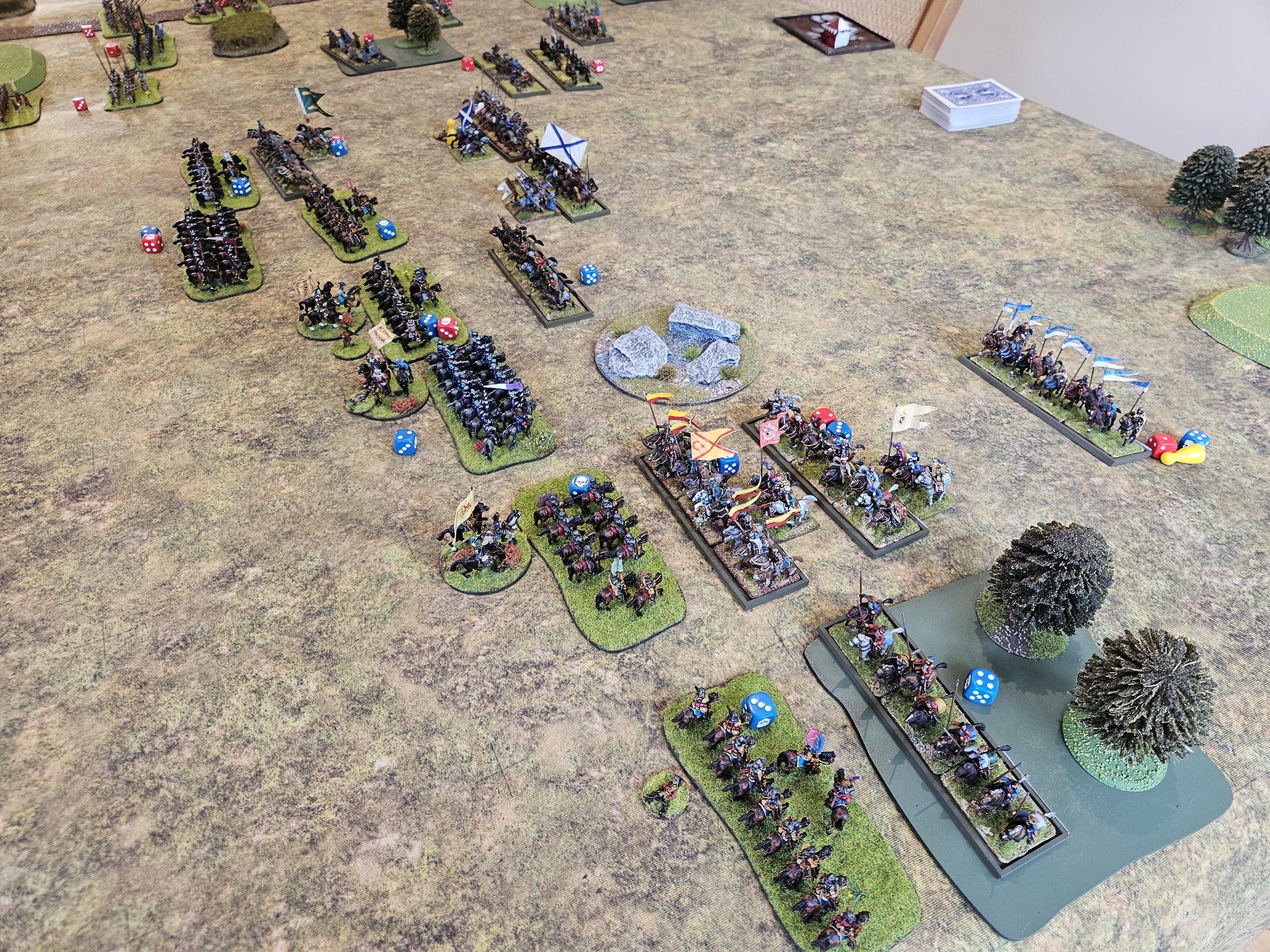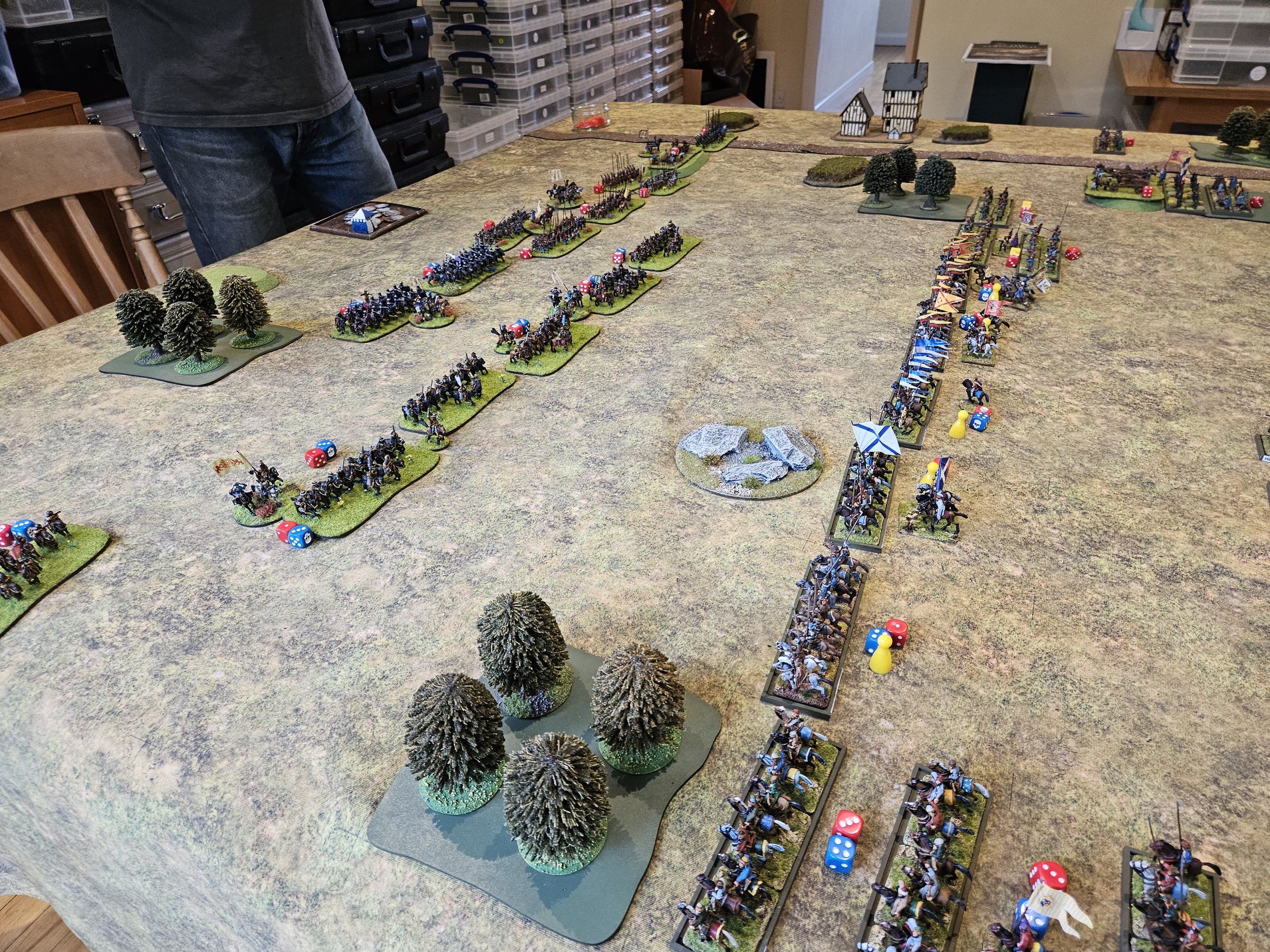TTS AAR: Welsh Open, Game 2: Venetians vs Later (Eastern) Romans
/My second game at this year’s Welsh Open To The Strongest tournament was against William and his Later (Eastern) Romans.
William’s army was truly massive: 16 victory medals worth versus the mere 12 that I was fielding. The only downside was that many of his troops were raw but, being Auxilia, they still had an averagely decent save.
The terrain was quite heavy (the flat grey patches in the pictures are actually woods) and infantry get a lot of advantage defending against mounted, so I decided to dismount two of my Later Knights units to give me a bit of flexibility in attack.
The action began on my left, with the Roman cavalry advancing quickly towards my lines. As luck would have it, that’s where I’d put one of my dismounted knights…which just goes to show what can happen when you try to be too clever!
No matter: the Roman horse pushed a couple of my light cavalry units back but left themselves in a position where I could charge them from the flank with the foot knights. Should be no problem: I had an officer with the knights, so all I needed for success was anything except a couple of Aces in a row…
Meanwhile the two lines had come together in the centre and on the right as two separate clashes.
On the right, my mounted Knights charged home and had initial success, disordering two of the enemy Auxilia units and leaving them ripe for destruction. unfortunately, his men then turned on their personal forcefields: William spectacularly saving against every attack I could throw at them. I distinctly remember four flank charges going in against disordered Auxilia with no result!
Equally anoyingly, my dismounted knights could see a way through to his three undefended camps, and were the boys to take the nine victory medals that they represented, but just couldn’t get the cards/freedom to do so.
The Aces were also still coming thick and fast!
If you look at the photo above, you’ll see two of them on the table: one (on the far side) stopping my light cavalry from taking his camps (the nine points eluding me again); the other preventing a unit of Later Knights from rallying for the third or fourth time in a row.
By now I had actually killed his cavalry, meaning that the dismounted knights that had disposed of them could head back into the centre to help out the pike- and spearmen, who were under some pressure from advancing Romans. You’ll also see, in the photo below, that on the right I have withdrawn to regroup, although I did kill two to three of his units before doing so.
Things finally turned my way. The unit in front of the pikemen (about to be hit in the flank by dismounted knights) charged forward already disordered. Unfortunately for them, the cards fell my way, and they managed only to impale themselves on the pikes facing them, taking them and their general off the table.
Almost unbelievably, this turned out to be the straw that broke the Roman camel’s back: the four victory medals gained being enough for me to win the game 16-5, despite the fact that it had seemed to me as if I was on the back foot throughout.
Or it might have been that the Knights then crashed into the Bowmen behind the unfortunate infantry, and it was those two victory medals that won me the day. To be honest, I can’t remember which it was!
It had been a thrilling battle: the epitomy of a small number of elites versus a huge number of less than veteran troops. William’s troops’ ability to save against my attacks was truly legendary, and I seriously thought I was going to be swamped at any moment.
Two games in and two wins: good going so far…


